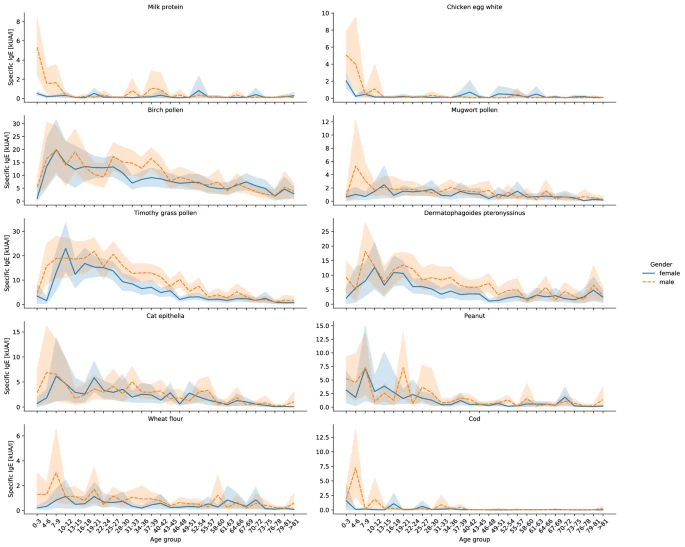Allergy, Asthma & Clinical Immunology 18, Article number: 75 (2022)
Abstract
Background
Allergies constitute an important public health problem, and epidemiological data is crucial to developing strategies for its prevention and therapy. Few population-based studies are available for data on allergies and sensitization. However, as these studies are expensive and time-consuming, novel approaches are searched for.
Objectives
A large monocentric IgE dataset was used to analyse quantitative sensitization data in different age and gender groups and compared the results to available epidemiological data.
Methods
A total of 14,370 patients who sought medical care at the Department for Dermatology and Allergology at the Technical University of Munich, Germany was analysed.
Total IgE and sensitization measured in specific IgE levels to common food allergens and aeroallergens were compared between females and males, age groups, and the year of testing (2003–2021).Results
 |
| Line graphs showing the mean sensitization for ten different allergens in kUA/l with 95% confidence intervals for females and males in different age groups |
Conclusion
This study shows that, despite potential patient and test selection bias, the results of the quantitative IgE-dataset analysis closely reflect results of population-based data. Thus, as large cohorts can be examined with a minute amount of effort, this surrogate method appears promising to supplement epidemiology research.
No comments:
Post a Comment